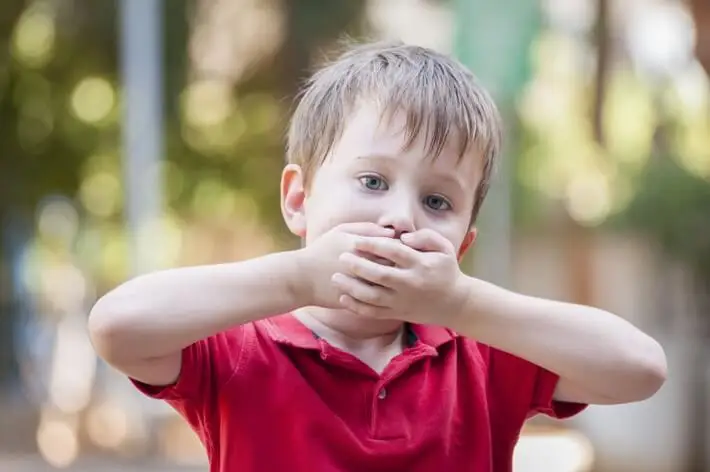Selective Mutism: What it Is and What Causes It

Selective mutism is included in the Diagnostic and Statistical Manual of DSM-5 Mental Disorders. The definition is: “a child who usually has adequate communication skills, but who only communicate in certain surroundings.”
The main characterization of this disorder is that the child refuses to speak in certain surroundings or situations. For example, they may speak when they’re around family, but they don’t speak at school or in front of strangers.
Why does this happen? What causes a child to become mute in certain contexts? In this article, you’ll learn some of the reasons this may arise.
Selective mutism in children

Selective mutism is more common in boys than in girls. It occurs at an early age and it deserves special attention since it can lead to a lot of suffering.
A person who is afraid of spiders can’t help but run away or scream when they see them. In the same way, a child who suffers from selective mutism can’t help but be quiet. The reason is that selective mutism likely has to do with anxiety. However, this is not entirely clear since there are few cases.
Iván Carabaño Aguado, a pediatric physician at the 12th of October University Hospital in Madrid, points out that selective mutism is “a type of anxiety disorder that may be inherited and can be compared to extreme shyness“.
Mutism is only considered a disorder in cases where it lasts for more than a month. In fact, according to Carabaño, mutism is still sometimes present in adulthood, which can cause serious problems.
Mutism that extends to adulthood can create limitations and barriers to all degrees. Both when meeting people and when trying to get a job.
You may be interested in this article: Mental Illness in Children and Its Symptoms
Factors that predispose children to suffer from selective mutism

- Personality characteristics: children are more prone to this disorder if they are very shy or withdrawn
- Learning deficiencies: some examples may be stuttering; some delay in language, speech or a lack of social skills.
- Family environment: if there is a model of avoidance at home and the parenting style of one or both parents is overprotective or authoritarian, then the child can develop selective mutism.
- School setting: an authoritarian or condescending teacher who favors unhealthy competition and makes fun of a child can increase the likelihood of the child having selective mutism.
Check out this article: How to Detect Autistic Spectrum Disorders
Also, you should always consider possible traumatic events that may condition you to suffer from this disorder. If you suspect that your child may have selective mutism, you should take them to a professional.
You should never punish, scold, or not believe a child who is in a situation where they don’t want to speak. This will only increase the symptoms. You must be understanding and treat them with love. Also, encourage them to interact with children they don’t know, and help them strengthen their friendships.
All cited sources were thoroughly reviewed by our team to ensure their quality, reliability, currency, and validity. The bibliography of this article was considered reliable and of academic or scientific accuracy.
- Ahne, V. (2009). Mutismo Selectivo. Mente y Cerebro.
- Balbuena Teruel, S., Rueda Lozano, I., & López Herrero, P. (2012). Estudio de un caso de mutismo selectivo: evaluación e intervención en el contexto escolar. Análisis y Modificación de Conducta. https://doi.org/10.1364/OE.18.003011
- Méndez Carrillo, F. J., Bermejo de las Heras, R. M., & Olivares Rodríguez, P. J. (2002). Mutismo selectivo: naturaleza, evaluación y tratamiento. In Manual de psicología clínica infantil y del adolescente : trastornos específicos.
- Molina, M., Tomás, J., Baeza, E., & Sarlé, M. (1999). Mutismo selectivo. = Selective mutism. Revista de Psiquiatría Infanto-Juvenil.
- Muñoz, S. (2005). El mutismo selectivo. Psicologia. Com.
- Olivares Rodríguez, J., Piqueras Rodríguez, J. A., & Rosa Alcázar, A. I. (2006). Tratamiento Multicomponente de un Caso de Mutismo Selectivo. Terapia Psicologica.
- Urban, C. C., Gallego, C. G., & Gallo, P. M. (2009). El mutismo selectivo. Guía para la detección, evaluación e intervención precoz en la escuela. Creena Centro de Recursos de Educación Especial de Navarra. https://doi.org/10.1080/03007995.2016.1206872
This text is provided for informational purposes only and does not replace consultation with a professional. If in doubt, consult your specialist.








